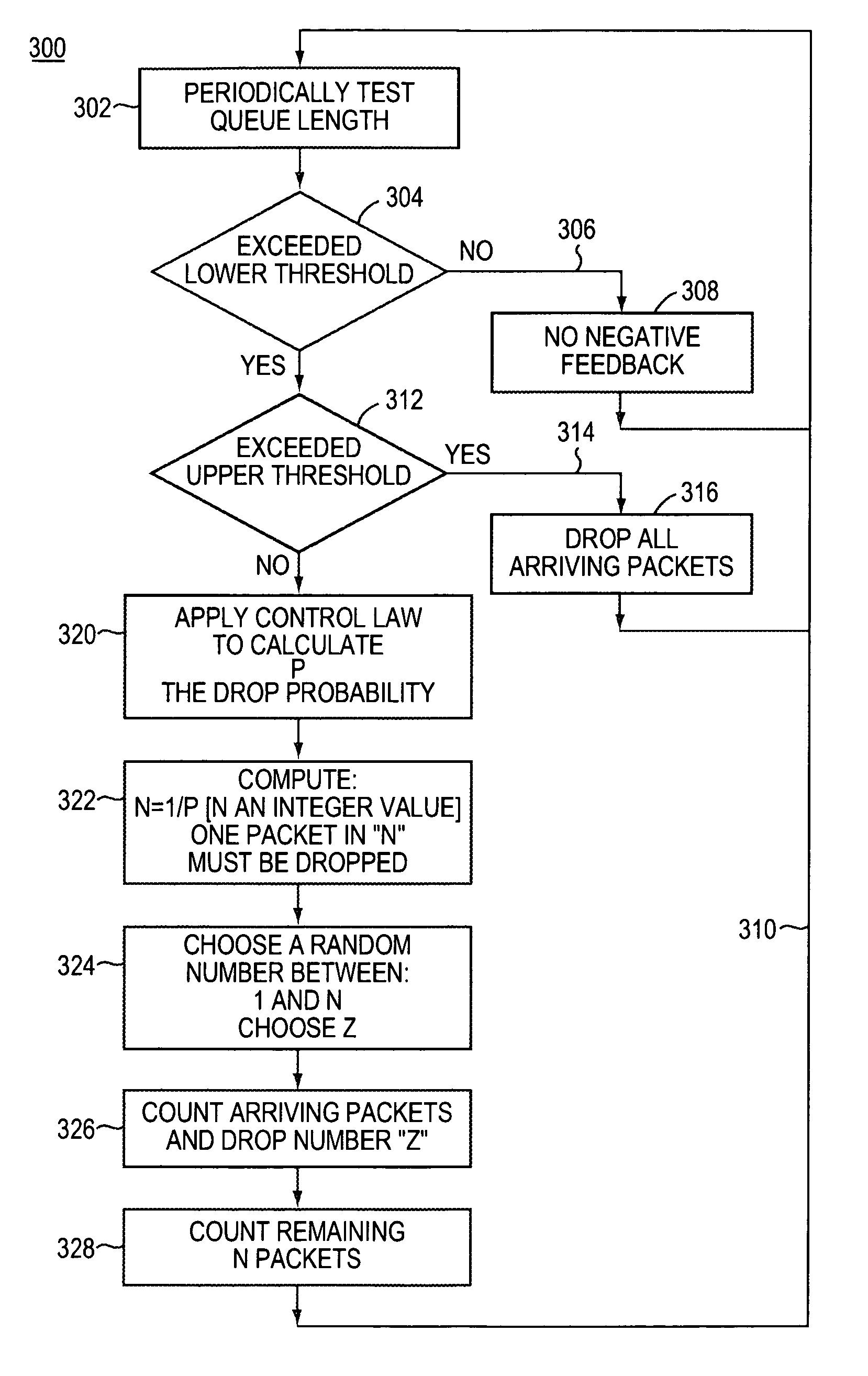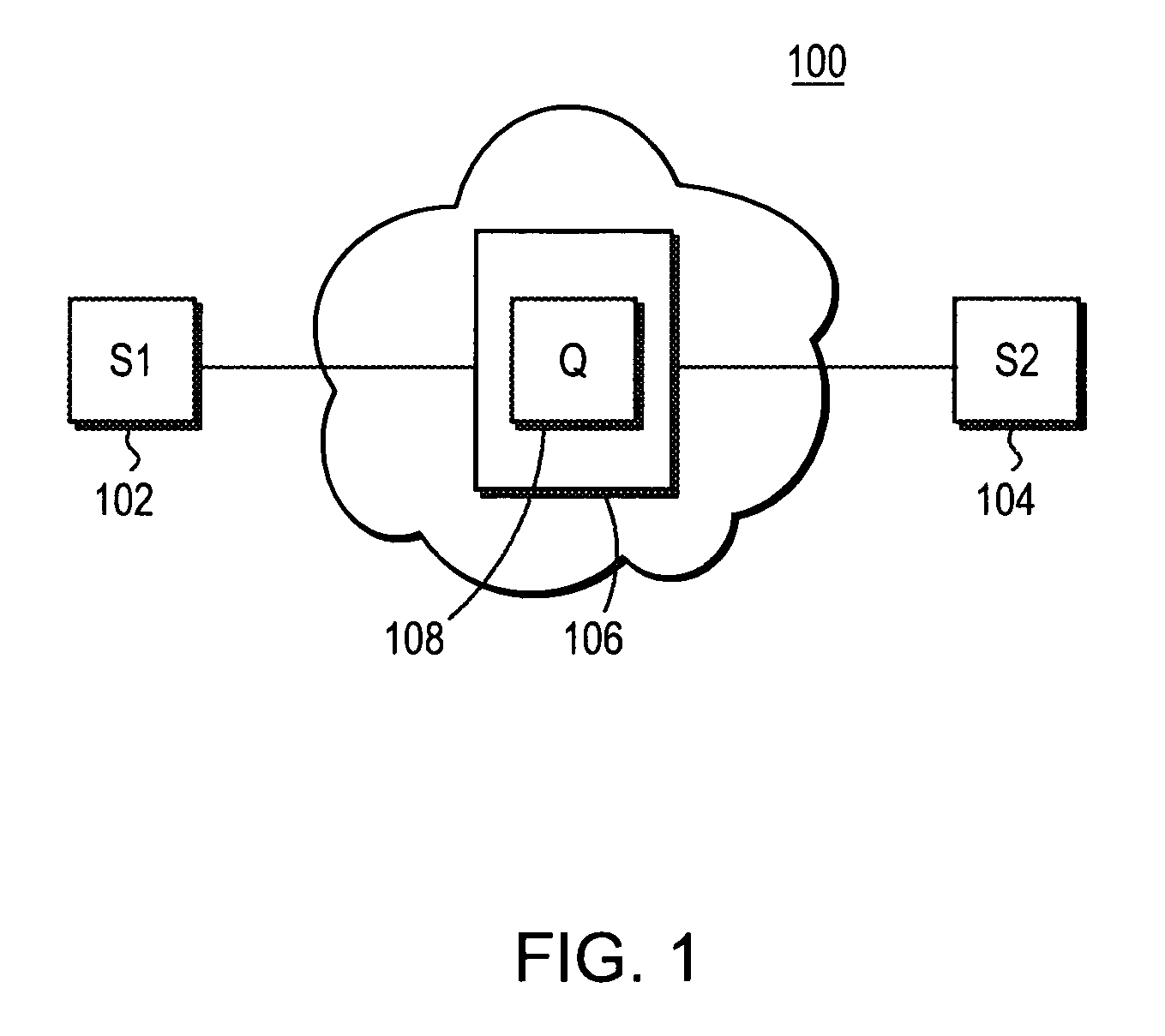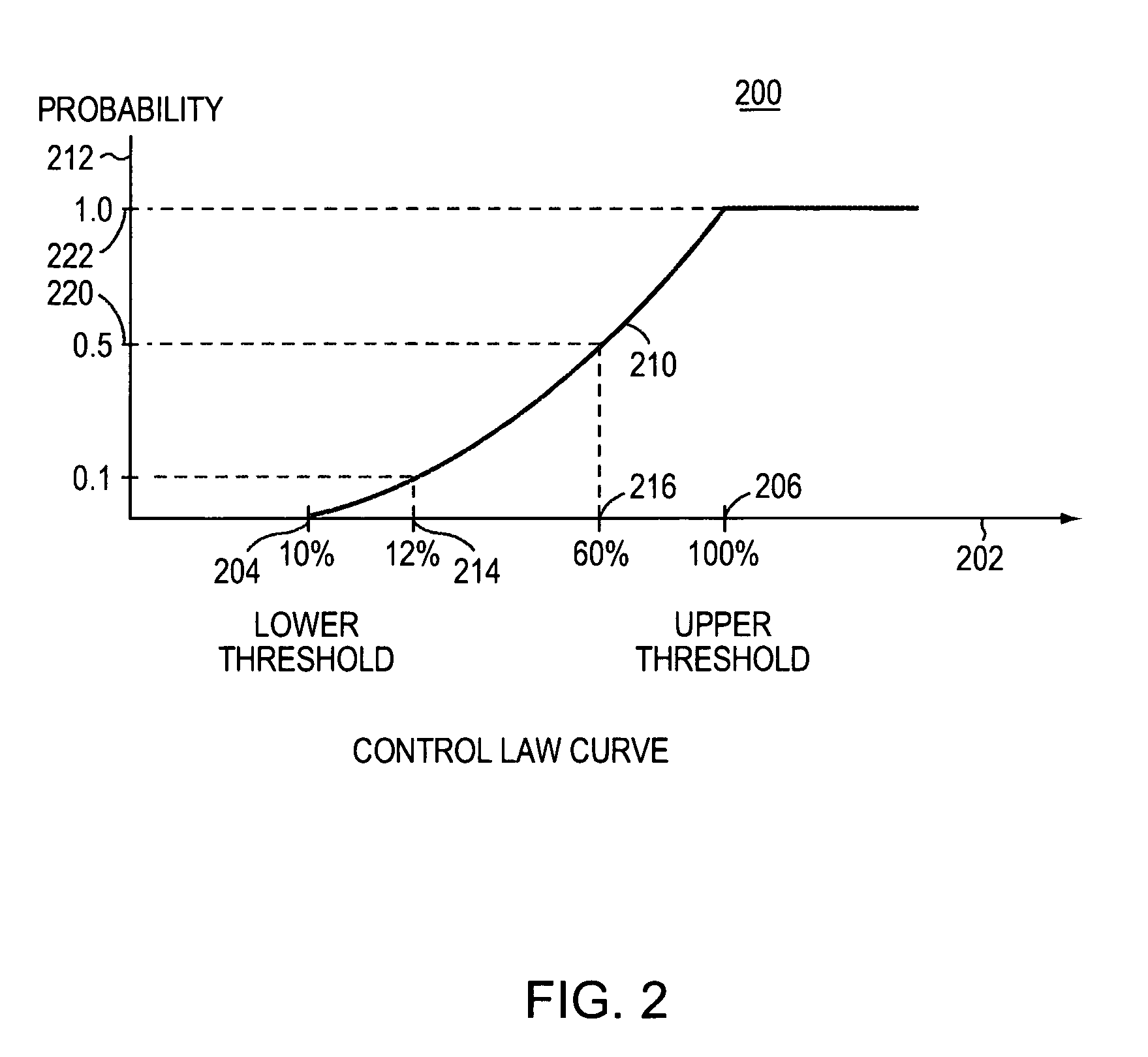Method of detecting non-responsive network flows
- Summary
- Abstract
- Description
- Claims
- Application Information
AI Technical Summary
Benefits of technology
Problems solved by technology
Method used
Image
Examples
example implementation
that Uses this Technique
[0092]An example of an implementation of this technique is:
[0093]1. Keep a history of the last D drops as shown in table 900. The information on each drop includes data identifying the flow and the time the drop occurred as shown in table 900. This history is kept in a circular buffer where the oldest drop is aged out when a new drop is added to the record. The size of this record, that is the value of D, should increase with bandwidth (a value of D=3000 is sufficient for a link of 4 Mbps.
[0094]2. Each flow with a number of drops in the record significantly larger than the average, D / (number of flows in the current record) is considered a candidate non-responsive flow. This can be a simple metric; here, 1.5 times the average is used, i.e., look at flows that are getting 50% more drops than average.
[0095]3. Test each of the candidate non-responsive flows against the hypothesis that its interdrop intervals (the time between the drops of a packet of that flow) a...
experiment 1
sive Flow in an Increasing Load of FTP'S
[0105]One CBR composed of 1500 byte packets sent at a 0.4 Mbps rate and 30 FTPs (with an maximum transmission unit of 1500 bytes) share a 4 Mbps link. The total simulation time is 1200 seconds, or 20 minutes. The CBR flow is active for the entire simulation. From 0 to 520 seconds, only 9 FTPs were active, thus each flow received about 0.4 Mbps. Starting at 520 seconds, one additional FTP began transferring every 20 seconds until the time reached 920 seconds.
[0106]A drop record of 3000 samples was used to calculate the statistics, thus results begin at about 450 seconds. After that, each new drop was used in a new calculation and the oldest drop was deleted, creating a “sliding” history. For statistical significance, only flows with more than 80 drops were used, accounting for the fact that the drop numbers all started at 80.
[0107]Turning now to FIG. 11 and FIG. 12, simulation graphs 11,000 and 12,000 are shown. FIG. 11 shows the number of drop...
experiment 2
rt RTT FTP to the Mix
[0116]In experiment 1, all FTPs had a round trip time of 100 ms. Thus in the presence of congestion, every FTP decreased its share and the CBR had a clear advantage over FTP. However, if an FTP has a shorter round trip time, it can get a larger share of drops due to its faster response. A detection method for non-responsive flows should not misidentify a short RTTT flow as a non-responsive one.
[0117]Turning now to FIG. 13, graph 13,000 give the response in experiment 2. In experiment 2, we used the same configuration as experiment 1, except that one of the 9 FTPs that starts at time 0 has a round trip time of 20 ms instead of 100 ms. We show in FIG. 13 and FIG. 14 that though the short-RTT FTP 12,002 gets a large share compared to other FTPs or CBR, it is more like a standard TCP than the CBR. In other words, we are able to differentiate the short-RTT TCP from a non-responsive connection, even when both get disproportionate bandwidth shares. This second criterio...
PUM
 Login to View More
Login to View More Abstract
Description
Claims
Application Information
 Login to View More
Login to View More - R&D
- Intellectual Property
- Life Sciences
- Materials
- Tech Scout
- Unparalleled Data Quality
- Higher Quality Content
- 60% Fewer Hallucinations
Browse by: Latest US Patents, China's latest patents, Technical Efficacy Thesaurus, Application Domain, Technology Topic, Popular Technical Reports.
© 2025 PatSnap. All rights reserved.Legal|Privacy policy|Modern Slavery Act Transparency Statement|Sitemap|About US| Contact US: help@patsnap.com



